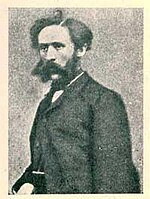Richard Maack
| Richard Otto Maack | |
|---|---|

Young Richard Maack
|
|
| Born |
September 4, 1825 Kuressaare, Estonia |
| Died | November 25, 1886 (aged 61) St. Petersburg, Russia |
| Occupation | Naturalist, geographer, botanist, and educator. |
Richard Otto Maack (also Richard Karlovic Maak, Russian: Ричард Карлович Маак; 4 September 1825 – 25 November 1886) was a 19th-century Russian naturalist, geographer, and anthropologist. He is most known for his exploration of the Russian Far East and Siberia, particularly the Ussuri and Amur River valleys. He wrote some of the first scientific descriptions of the natural history of remote Siberia and collected many biological specimens, many of which were original type specimens of previously unknown species.
Ethnically Maack was an Estonian; however, the Russian Empire controlled this country during his lifetime. He was a member of the Siberian branch of the Russian Geographical Society.
He studied natural sciences at the University of St. Petersburg. In 1852 he became a professor of natural sciences at the Gymnasium in Irkutsk and later director of the school. From 1868 to 1879, he was the superintendent of all schools of northern Siberia.
During the 1850s he undertook a number of expeditions in Siberia including those to the Amur River valley (1855–1856) and the Ussuri River (1859). He also participated in the Russian Geographical Society's first expedition (1853–55) to describe the orography, geology and population of the Vilyuy and Chona River basins.
He is credited with discovering Syringa reticulata var. amurensis simultaneously and independently of Carl Maximowicz.
...
Wikipedia
